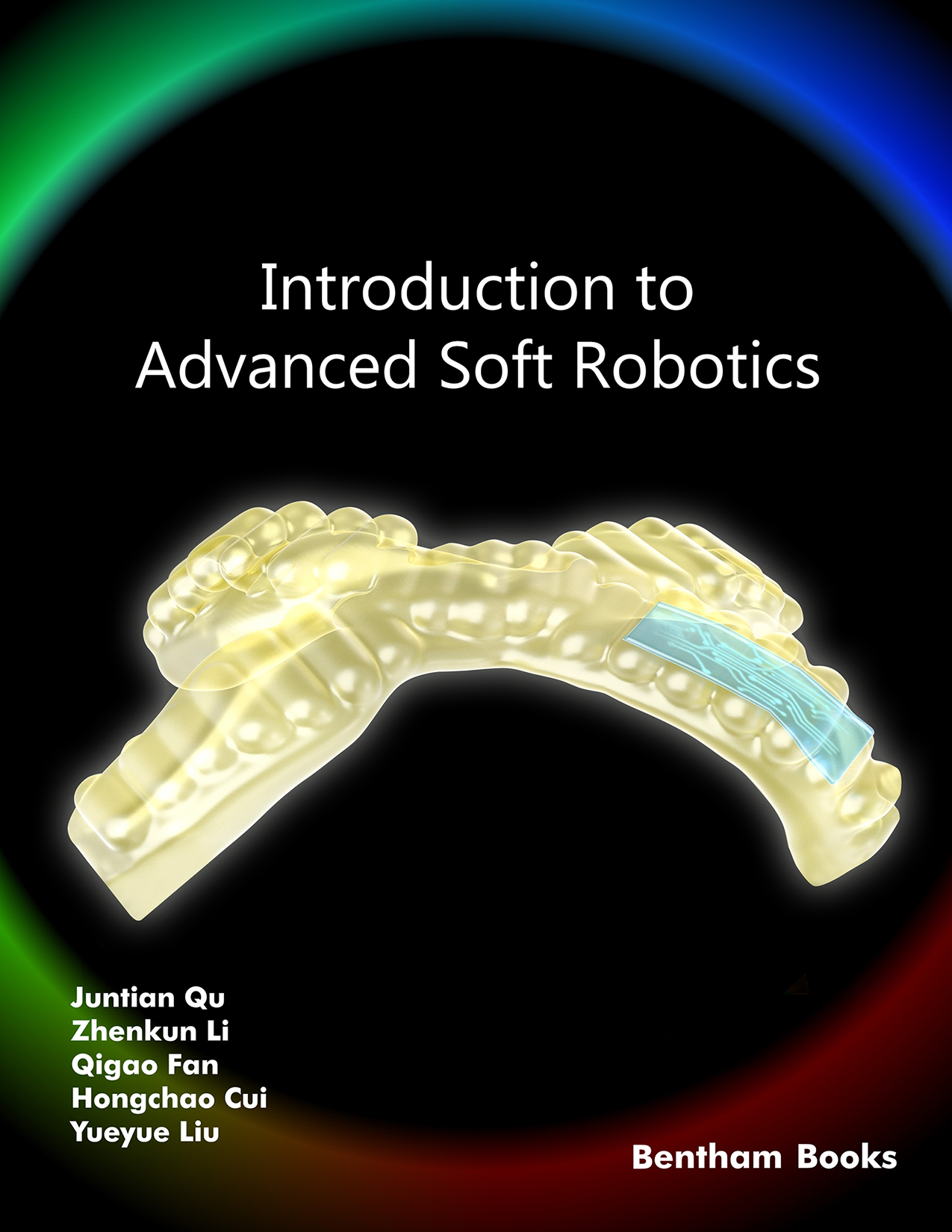This book “Introduction to Advanced Soft Robotics” is the Vol. 2 of the eBook
series “Frontiers in Electrical Engineering”. It comprises seven chapters
written by the leading researchers in this field. Soft robotics is an important
emerging sub-discipline of robotics. To enable readers to better understand soft
body robotics, the authors try to use an easy-to-understand, illustrated form to
show the contents of this book, avoiding the excessive use of cumbersome
mathematical theory knowledge. At present, many well-known colleges and
universities have increased the teaching courses of soft body robotics along with
robotics. Many of the terminologies used in this volume for many soft robotics are
also directly quoted from the field of robotics.
In Chapter 1, Qu et al. focuses on the basics of soft-bodied robots. The
chapter first introduces the definition, characteristics, and applications of soft
robots, then, the origin of soft robots and how early scholars embarked on the
study of this emerging field are described. Finally, we introduce the development
of soft robots through a large number of literature surveys, list many landmark
achievements that have had a significant impact on the field of soft robotics and
provide analyses of the reasons for the popularity of the field and its rapid
development.
In Chapter 2, Li et al. focuses on drive technology for soft-body robots. This
chapter first introduces the definition of soft body drive. Then, the classification
of soft body drives and the performance comparison of different types of soft
body drives are introduced. Finally, this chapter introduces the commonly
used soft body drive methods in detail, including fluid drive, cable drive, shape
memory material drive, electroactive polymer drive, etc., and puts forward the
challenges of the current soft body drive.
In Chapter 3, Liu et al. mainly introduces the sensing technology of soft robots.
This chapter first classifies the soft robot sensing technology, including the
overview of soft robot sensing technology, and the comparison of different
categories of sensing technology, etc. Then , we introduce the soft robot sensing
technology in detail, including vision-based sensing technology, haptic-based
sensing technology, and fusion sensing technology, etc. Finally, we briefly
introduce the sensing integration technology for the control of soft robots.
In Chapter 4, Li et al. focuses on the materials, design, and manufacturing of soft
robots. This chapter first introduces the commonly used soft materials for soft
robots, including elastomers, electroactive polymers, shape memory
polymers, hydrogels, liquid metals, etc. Then, the structural design methods for
soft robots are introduced, which mainly include bionic structural design, variable
stiffness structural design (e.g. antagonist principle, variable stiffness of
shape memory materials, blocking principle, electric current variable fluid, low
melting point alloy, magnetic fluid, etc.) as well as other special structural
design methods. Finally, soft robot manufacturing methods are also
described, including casting and molding, shape deposition manufacturing, 3D
printing, and so on.
In Chapter 5, the modeling and control of soft robots are introduced by Fan et al.
This chapter first introduces the kinematic modeling methods of soft robots,
including the segmental constant curvature model and the Cosserat rod theory in
the mechanical model. Then, this chapter introduces the dynamics modeling
methods of soft robots, including the centralized parametric model, the "virtual"
rigid linkage robot model, the Cosserat rod model, and the machine learning
method. Finally, we introduce soft robot manufacturing methods, including
casting, shape deposition manufacturing, 3D printing, and so on. In the end, the
control strategies of soft robots are introduced, including model-based control
methods, model-free control methods, and hybrid control strategies.
In Chapter 6, Cui et al. mainly introduces the application of soft robots. This
chapter mainly introduces the scenario applications of soft robots in
underwater, agriculture, medical and industrial fields. It has a broad
application value in non-destructive grasping, safe operation, and wearable
devices.
In the last chapter, Qu et al. focuses on the challenges and prospects of soft
robots. This chapter mainly introduces the main challenges and future
development trends of soft robots in the directions of materials, design and
fabrication, actuation and sensing, modeling, and control.
We would like to express our gratitude to all the authors for their excellent
contributions. In addition to the main authors participating in the writing, this
book also benefits from the support and help of Zhenping Yu, Haozhi Huang, Jia
You, Chengyao Deng, Yin Sun, Liping Jiang, Zhe Hou, Yunrui Zhang, Jiayi
Zhang, Jiajia Zhang, Jingjing Lu, Baijin Mao, Yining Xu, and Weichen Wang.
We also wish to thank the entire team of the Bentham Science Publishers, particularly Mrs. Fariya Zulfiqar (Manager Publications), Mrs. Humaira
Hashmi (Editorial Manager Publications), and Mr. Obaid Sadiq (Manager
Bentham Books) for their efficient handling of this book at all stages of its
publication. We are confident that this volume of the eBook series will receive
wide appreciation from the researchers.
Juntian Qu
Shenzhen International Graduate School
Tsinghua University
Shenzhen, China
Zhenkun Li
School of Mechanical, Electronic and Control Engineering
Beijing Jiaotong University, Beijing, China
Qigao Fan
School of Internet of Things Engineering
Jiangnan University, Wuxi, Jiangsu, China
Hongchao Cui
School of Mechanical, Electronic and Control Engineering
Beijing Jiaotong University, Beijing, China
&
Yueyue Liu
School of Internet of Things Engineering, Jiangnan University
Wuxi, Jiangsu, China

